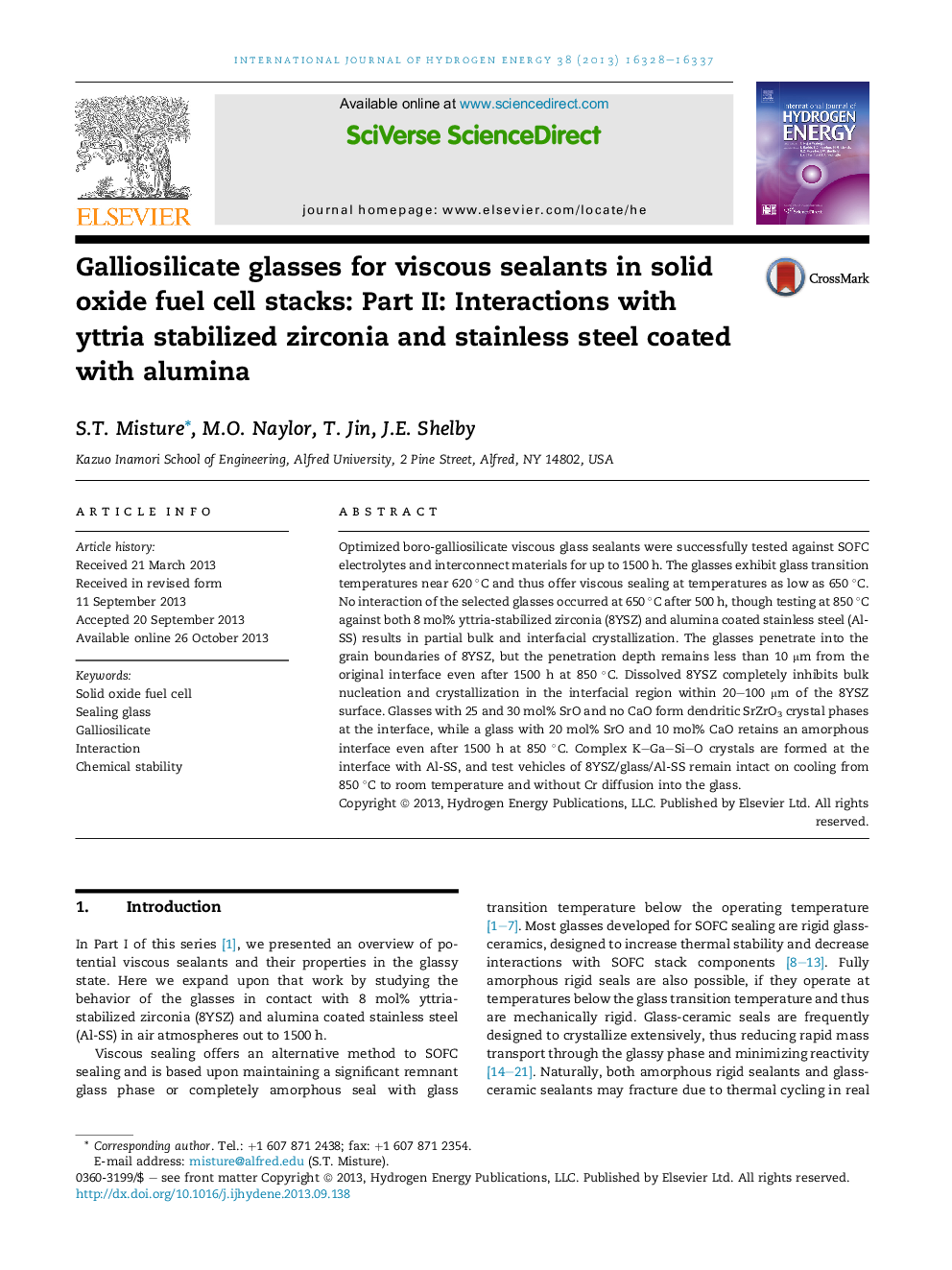| Article ID | Journal | Published Year | Pages | File Type |
|---|---|---|---|---|
| 1274195 | International Journal of Hydrogen Energy | 2013 | 10 Pages |
•A new series of galliosilicate glasses show excellent compatibility in SOFCs.•8YSZ dissolves into the glass and inhibits crystallization at the interface.•All optimized sealants form microstructures that are stable to at least 1500 h.
Optimized boro-galliosilicate viscous glass sealants were successfully tested against SOFC electrolytes and interconnect materials for up to 1500 h. The glasses exhibit glass transition temperatures near 620 °C and thus offer viscous sealing at temperatures as low as 650 °C. No interaction of the selected glasses occurred at 650 °C after 500 h, though testing at 850 °C against both 8 mol% yttria-stabilized zirconia (8YSZ) and alumina coated stainless steel (Al-SS) results in partial bulk and interfacial crystallization. The glasses penetrate into the grain boundaries of 8YSZ, but the penetration depth remains less than 10 μm from the original interface even after 1500 h at 850 °C. Dissolved 8YSZ completely inhibits bulk nucleation and crystallization in the interfacial region within 20–100 μm of the 8YSZ surface. Glasses with 25 and 30 mol% SrO and no CaO form dendritic SrZrO3 crystal phases at the interface, while a glass with 20 mol% SrO and 10 mol% CaO retains an amorphous interface even after 1500 h at 850 °C. Complex K–Ga–Si–O crystals are formed at the interface with Al-SS, and test vehicles of 8YSZ/glass/Al-SS remain intact on cooling from 850 °C to room temperature and without Cr diffusion into the glass.
